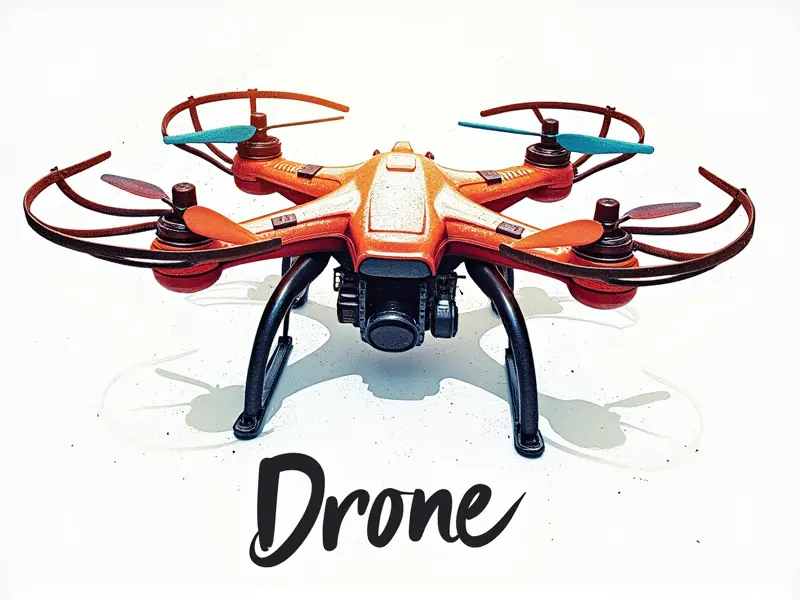How to adjust drone Gimbal?

Mastering Drone Gimbal Adjustment
Adjusting your drone's gimbal is a crucial step in ensuring that you capture smooth, professional-quality footage. The gimbal stabilizes the camera and helps maintain a steady shot even when flying through turbulent conditions or performing complex maneuvers. This guide will walk you through the process of fine-tuning your drone's gimbal to achieve optimal performance.
Perfect Your Drone's Camera Stability
The stability of your drone's camera is directly influenced by the gimbal's settings and calibration. A well-adjusted gimbal ensures that your footage remains sharp and clear, even during high-speed flights or when capturing dynamic scenes. By following these steps, you can enhance the overall quality of your aerial photography and videography.
Quick Guide: Fine-Tuning Your Drone's Gimbal
Fine-tuning your drone gimbal involves several key adjustments that can significantly improve camera stability:
- Initial Setup: Begin by ensuring that the gimbal is properly installed and connected to your drone.
- Battery Check: Make sure the battery levels are sufficient for a smooth calibration process.
- Software Update: Ensure that both your drone's firmware and gimbal software are up-to-date.
Tips for Optimizing Your Drone's Gimbal Angle
The angle at which the gimbal is set can greatly affect the quality of your footage. Here are some tips to optimize this:
- Horizontal Alignment: Adjust the horizontal tilt to ensure that the camera remains level during flight.
- Vertical Adjustment: Fine-tune the vertical angle for better framing and composition of shots.
- Pan Speed Control: Modify pan speed settings to match your shooting style and requirements.
Achieving Smooth Footage: Gimbal Adjustment Secrets
To achieve smooth footage, it's essential to understand the nuances of gimbal adjustment. Here are some secrets that can help you get pro-quality shots:
- Stabilization Settings: Experiment with different stabilization modes to find the one that works best for your needs.
- Battery Management: Keep an eye on battery levels during long flights to maintain consistent performance.
- Environmental Factors: Adjust settings based on wind conditions and other environmental factors affecting stability.
Easy Steps to Calibrate Your Drone Gimbal
The calibration process is straightforward but critical for optimal performance. Follow these easy steps:
- Power On: Turn on your drone and connect it to the remote control.
- Access Settings: Navigate to the gimbal settings menu in your drone's app or controller.
- Calibrate: Follow the on-screen instructions to calibrate the gimbal. This may involve moving the camera through its full range of motion.
Get Pro-Quality Shots with Proper Gimbal Setup
A properly set up gimbal is essential for capturing professional-grade footage. Here are some key considerations:
- Mounting: Ensure that the camera and gimbal are securely mounted to prevent any movement during flight.
- Balancing: Balance the weight of your camera on the gimbal arms for smooth operation.
- Testing: Test the setup in a controlled environment before taking it out into the field.
The Art of Adjusting Your Drone's Gimbal
Mastery over adjusting your drone's gimbal is an art form that requires practice and patience. By understanding how each setting affects camera stability, you can fine-tune your setup to perfection:
- Understanding the Basics: Learn about the different components of a gimbal and their functions.
- Trial and Error: Experiment with various settings until you find what works best for your specific needs.
- Ongoing Maintenance: Regularly check and adjust your gimbal to maintain peak performance over time.
Step-by-Step Gimbal Calibration for Drones
Fully calibrating your drone's gimbal ensures that it operates at its best. Here’s a step-by-step guide:
- Preparation: Ensure the battery is charged and all connections are secure.
- Access Calibration Menu: Open the calibration menu in your drone's app or controller.
- Follow Instructions: Move the gimbal through its full range of motion as directed by the on-screen prompts.
- Save Settings: Once calibrated, save and apply the new settings to ensure they take effect during flight.
Tips for Fine-Tuning Your Drone Gimbal
Fine-tuning your drone's gimbal can be a meticulous process. Here are some additional tips:
- Regular Checks: Periodically check and recalibrate the gimbal to maintain optimal performance.
- User Feedback: Use feedback from previous flights to make informed adjustments for future missions.
- Environmental Adaptation: Adjust settings based on varying environmental conditions such as wind speed or temperature.
Achieving Smooth Shots with Drone Gimbal Adjustments
The goal of adjusting your drone's gimbal is to achieve smooth, stable shots. By following the tips and steps outlined in this guide, you can significantly enhance the quality of your aerial footage:
- Consistency: Maintain consistent settings for different types of shoots.
- Innovation: Experiment with new techniques to push the boundaries of what’s possible with your drone and gimbal setup.
- Patience: Take time to fine-tune each aspect of your setup for the best results.
Conclusion
Mastery over adjusting your drone's gimbal is essential for capturing high-quality aerial footage. By following this guide, you can ensure that your camera remains stable and produces smooth, professional-grade shots. Regular calibration and fine-tuning will help maintain optimal performance, allowing you to take advantage of the full potential of your drone equipment.

